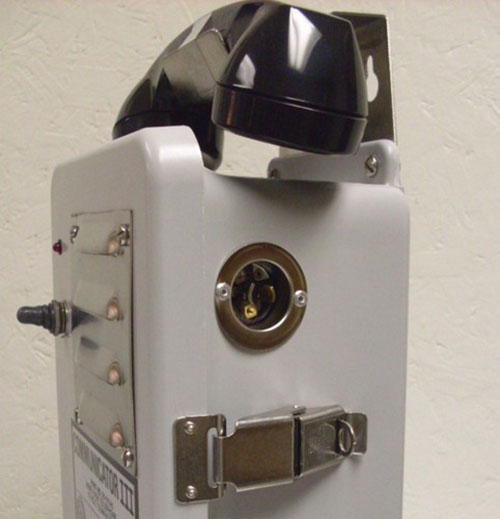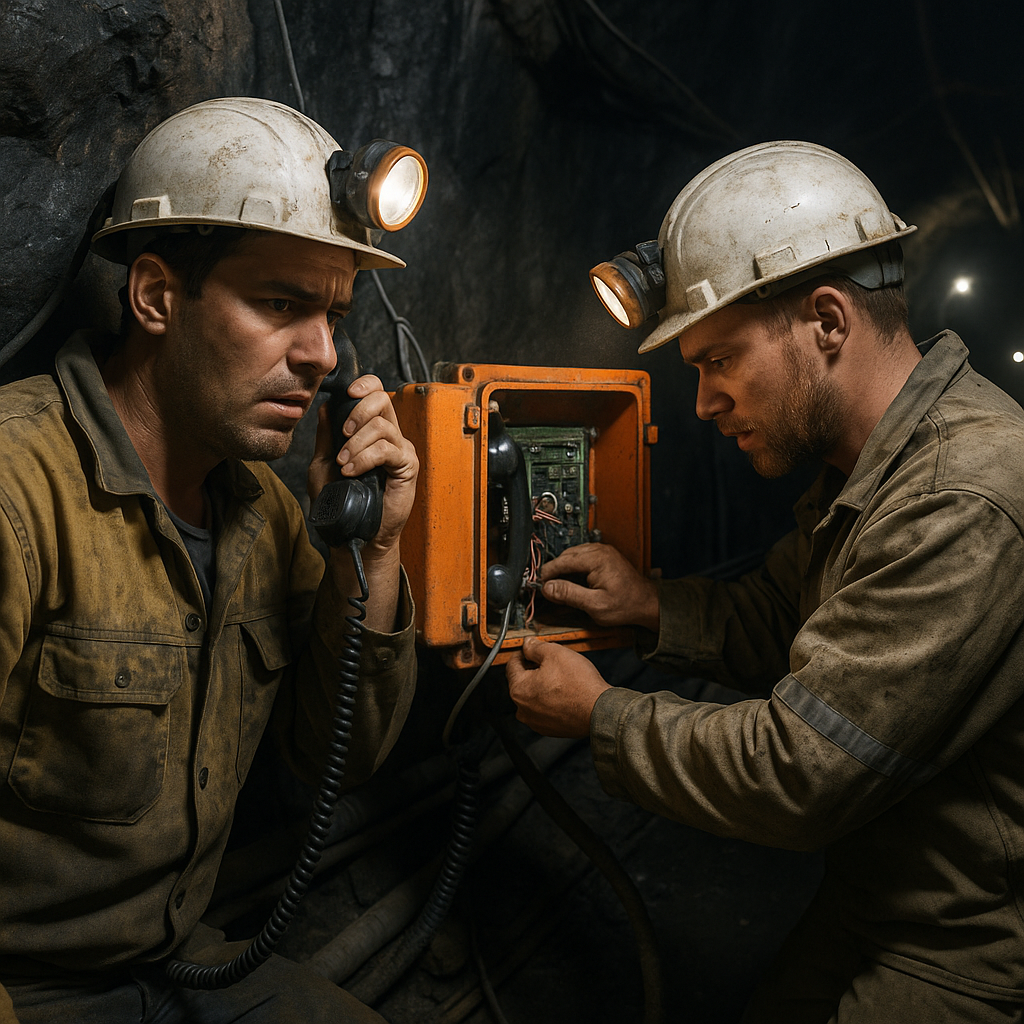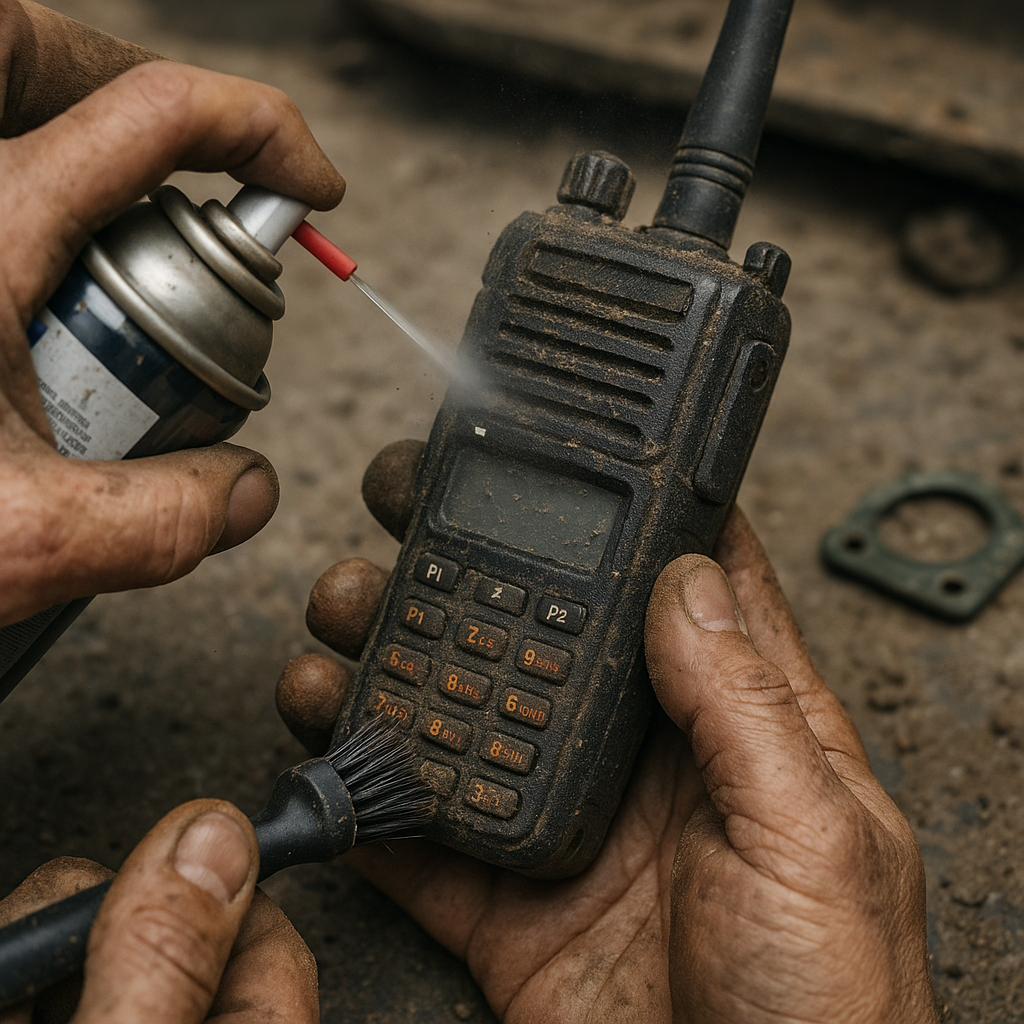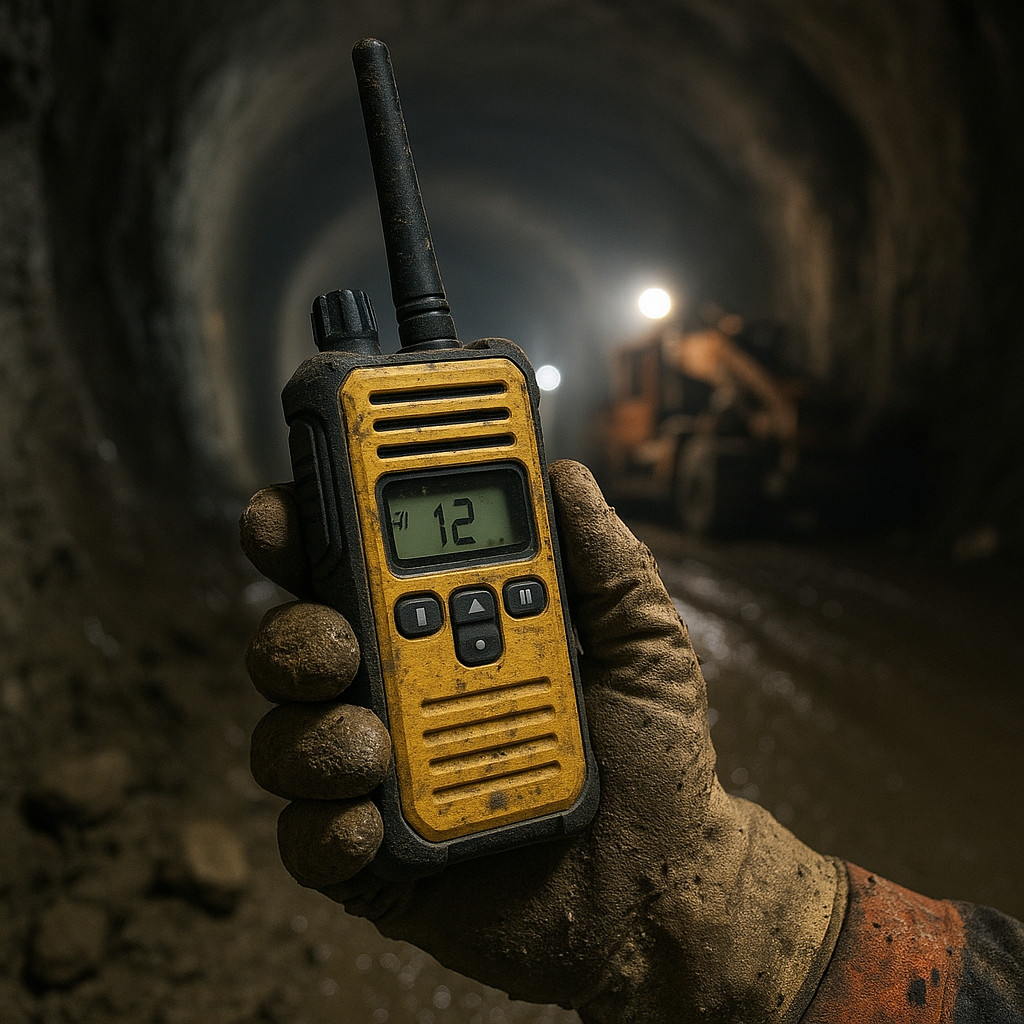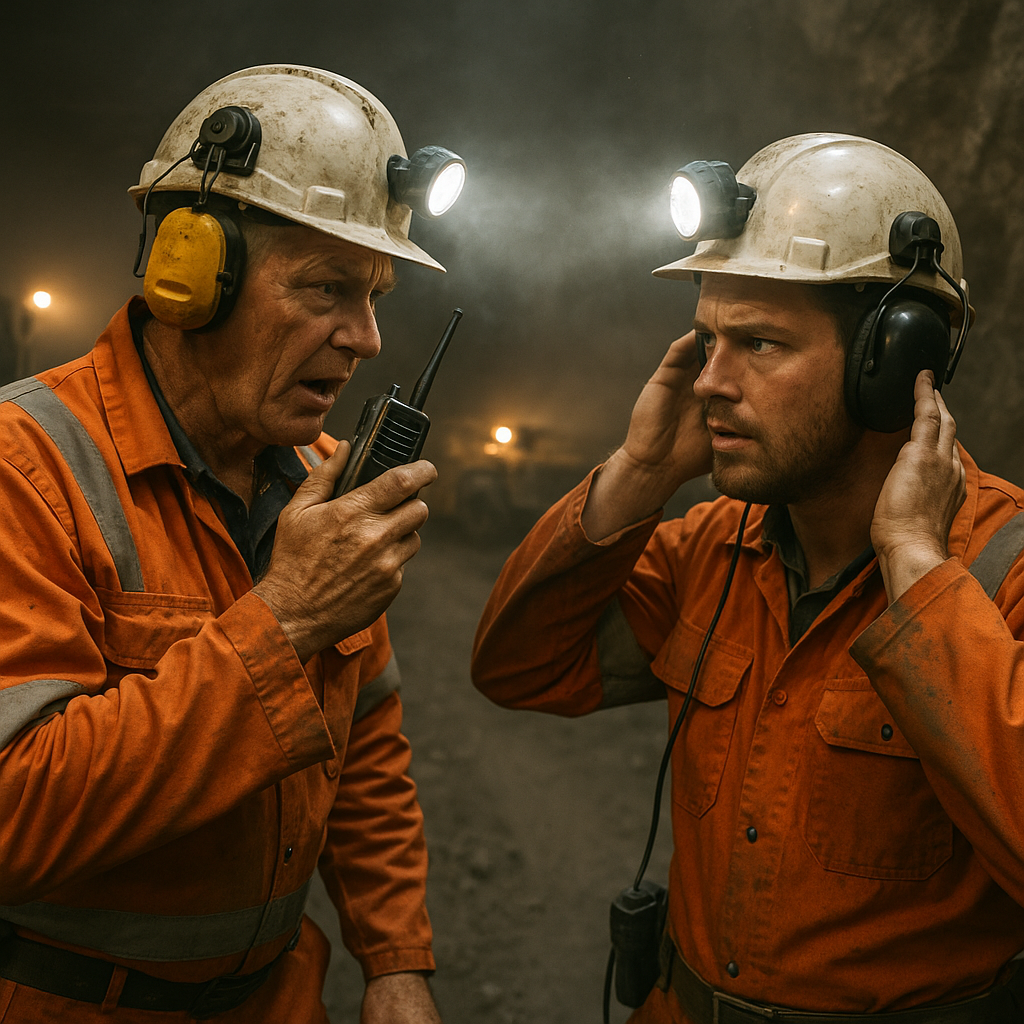Key Differences Between Kenwood & Motorola Radios
Radios that can’t handle dust, vibration, and noise don’t last underground. Crews need gear that works every time, no matter how rough the shift gets. Kenwood and Motorola are the top picks in mining, but their strengths show up fast when the job gets tough.
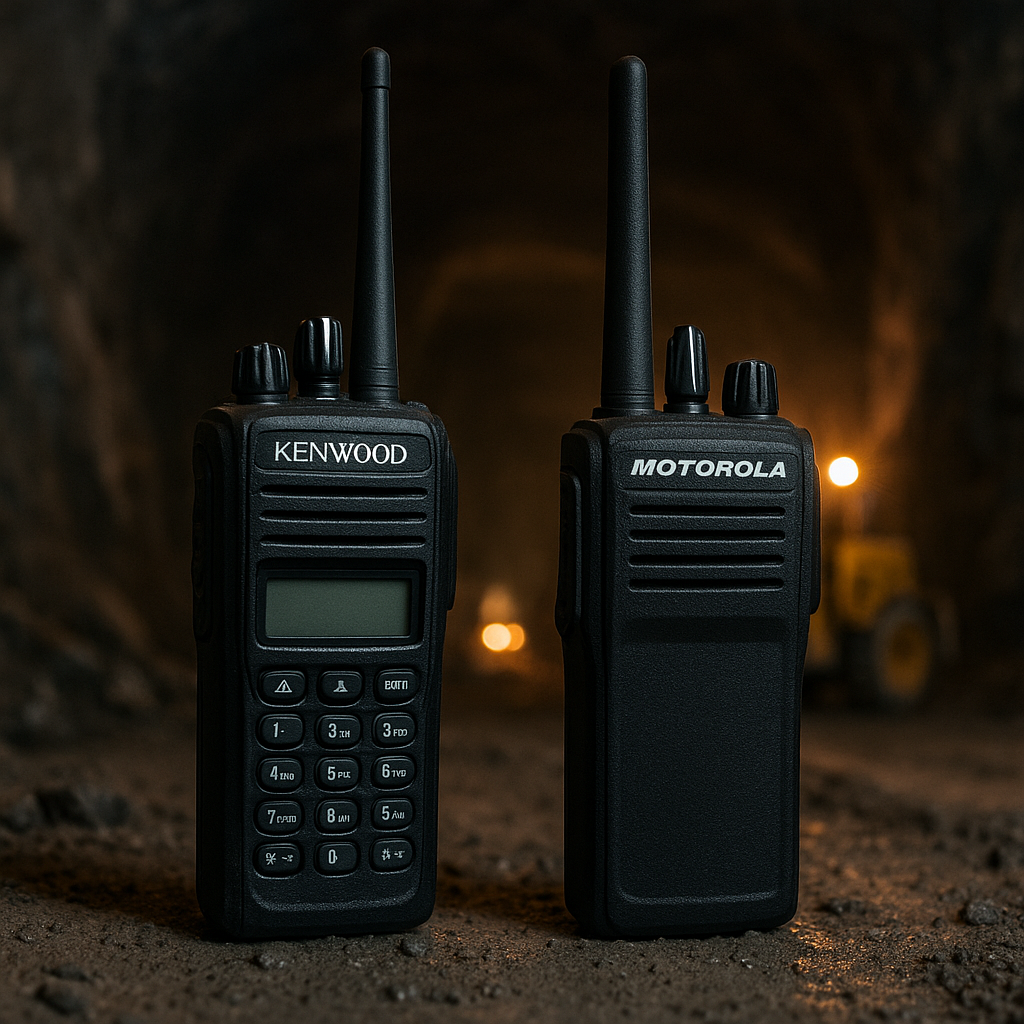
Signal Strength in Harsh Conditions
Signal dropouts cost time and put people at risk. Kenwood radios cut through background noise, delivering clear audio even when drills and loaders are roaring. Motorola’s noise cancellation strips out the worst of the machinery racket, letting voices come through when it matters. Both brands offer MSHA-certified models, so compliance isn’t a question. But when the rock gets thick and the tunnels twist, Motorola’s signal punches through where others fade. Kenwood’s battery efficiency keeps radios alive longer in the cold, but Motorola’s reach can mean the difference between a quick response and radio silence.
- Kenwood: Clear audio in high-noise zones
- Motorola: Superior noise cancellation and signal reach
- Both: MSHA-certified for hazardous sites
- Kenwood: Better battery life in freezing conditions
- Motorola: Stronger signal through dense rock
Signal clarity isn’t a luxury. It’s the backbone of safe, efficient mining. See the Kenwood radio selection for models that keep crews connected when the mine gets loud and unpredictable.
Durability That Survives Real Mining
Radios take a beating underground. Drops, knocks, and constant vibration are part of the job. Motorola radios go through military-spec testing: extreme heat, bitter cold, and relentless shaking. They keep working when lesser units fail. Kenwood’s sealed housings block out dust and moisture, stopping the slow damage that ruins electronics over time. Both brands back their mining radios with strong warranties, but Motorola’s designs shrug off impacts that would crack or disable other units. Over months and years, that means fewer repairs and less downtime.
Crews notice the difference. Motorola radios come back from the face with fewer broken clips and cracked cases. Kenwood’s seals keep out the fine dust that grinds away at buttons and contacts. Both brands last, but Motorola’s edge in impact resistance shows up in the repair logs. Fewer failures, less time spent swapping out gear, and more time on the job.
- Motorola: Survives drops, vibration, and temperature swings
- Kenwood: Sealed against dust and water
- Both: Reliable warranties and support
- Motorola: Fewer repairs over the long haul
For crews that can’t afford downtime, Motorola’s radio designs deliver the toughness that mining demands. When repairs are needed, our support team at Minesafe Electronics is ready to help minimize downtime and keep your operation moving.
Battery Power That Lasts the Shift
Dead radios leave crews in the dark. Kenwood’s hot-swappable batteries mean no waiting—just pop in a fresh pack and get back to work. Motorola’s IMPRES batteries stretch runtime, keeping radios alive through double shifts. Both brands offer rapid charging, but Kenwood’s diagnostics give a clear read on battery health, so there are no surprises. In deep cold, Motorola batteries hold their charge longer, keeping teams connected when the temperature drops.
- Kenwood: Hot-swap batteries for zero downtime
- Motorola: IMPRES batteries for extended runtime
- Both: Fast charging options
- Kenwood: Advanced battery health monitoring
- Motorola: Reliable power in freezing conditions
Smart power management isn’t just about convenience. It keeps teams talking when the job runs long. The latest radio models push every charge further, so safety features stay active and no one gets left out of the loop. We help mining operations select the right batteries and charging solutions to match the demands of every shift.
Controls and Programming That Fit the Crew
Training time eats into productivity. Kenwood radios keep it simple: new users pick up the basics fast, with controls that make sense right out of the box. Motorola packs in more features, but setup takes longer and menus run deeper. For teams that need custom channels, advanced safety alerts, or integration with other systems, Motorola’s flexibility pays off. Both brands support advanced safety protocols and emergency alerting, so crews get the tools they need for real emergencies.
- Kenwood: Intuitive controls, quick to learn
- Motorola: Deep customization, more features
- Both: Support for mining safety protocols
Some crews want plug-and-play. Others need every option. The right choice depends on the team and the mine. Our experts at Minesafe Electronics can walk you through programming and setup, ensuring your radios are ready for the field from day one.
Mining-Ready Integration
Mining isn’t just about radios. Communication systems have to work with atmospheric monitors, emergency alert devices, and control room gear. Radios that can’t connect to the rest of the safety net slow down response and create blind spots. Modern communication systems tie everything together, so when an alarm sounds or a sensor trips, the message gets through: fast and clear.
- Seamless integration with safety systems
- Reliable links to control rooms and monitors
- Support for emergency alert devices and alerts
Crews don’t have time to troubleshoot connections. Radios need to fit into the bigger system, working with every piece of safety equipment underground. We’ve helped mines integrate their radios with critical safety systems, so every alert reaches the right people without delay.
Get Expert Radio Guidance Today
Call Minesafe Electronics at 800-523-1579 or contact us to find the perfect radio solution for your mining operation.
‹ Back



